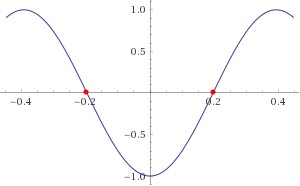Question #f5b3e
1 Answer
Jan 25, 2018
Please see below.
Explanation:
.
If, by intervals, you mean the period of the function we can find it as follows:
We know there is an identity that says:
Using this identity, we get:
Between
The period of the function can be found by dividing the period of a cosine function which is
Here is the graph of it:


